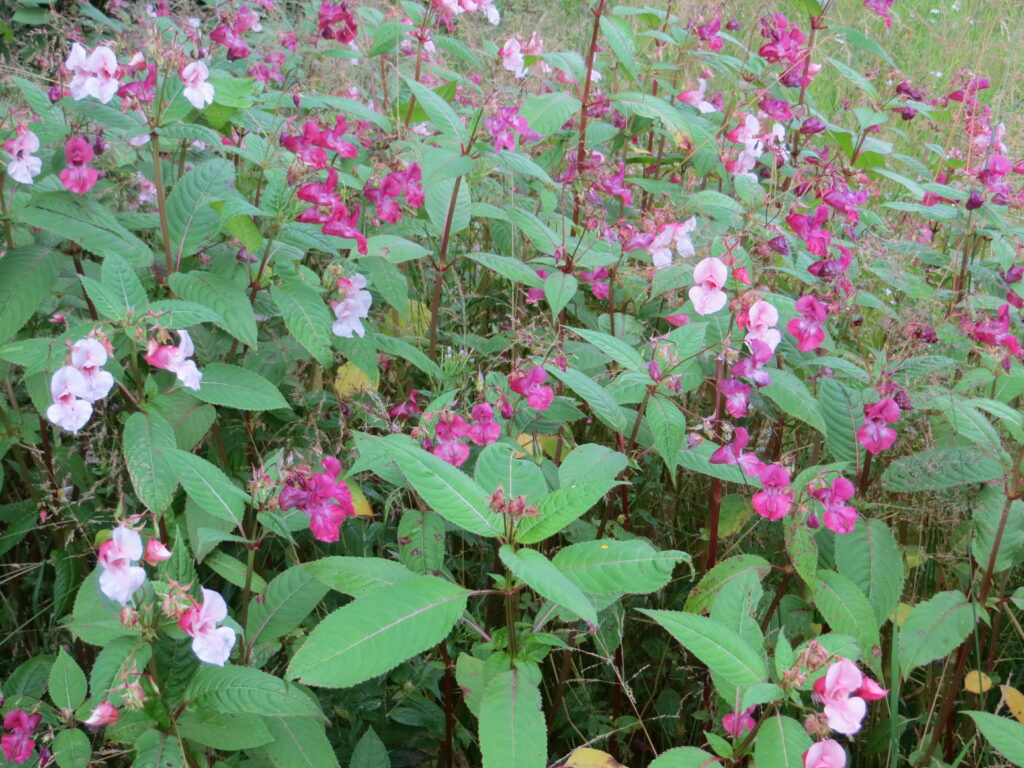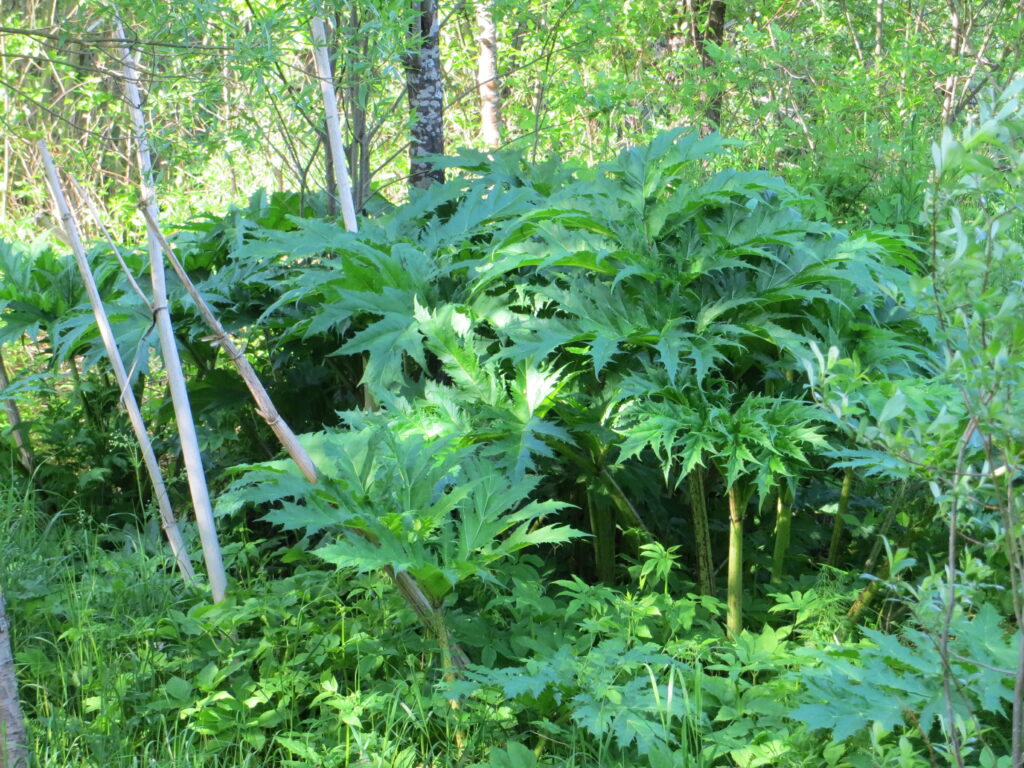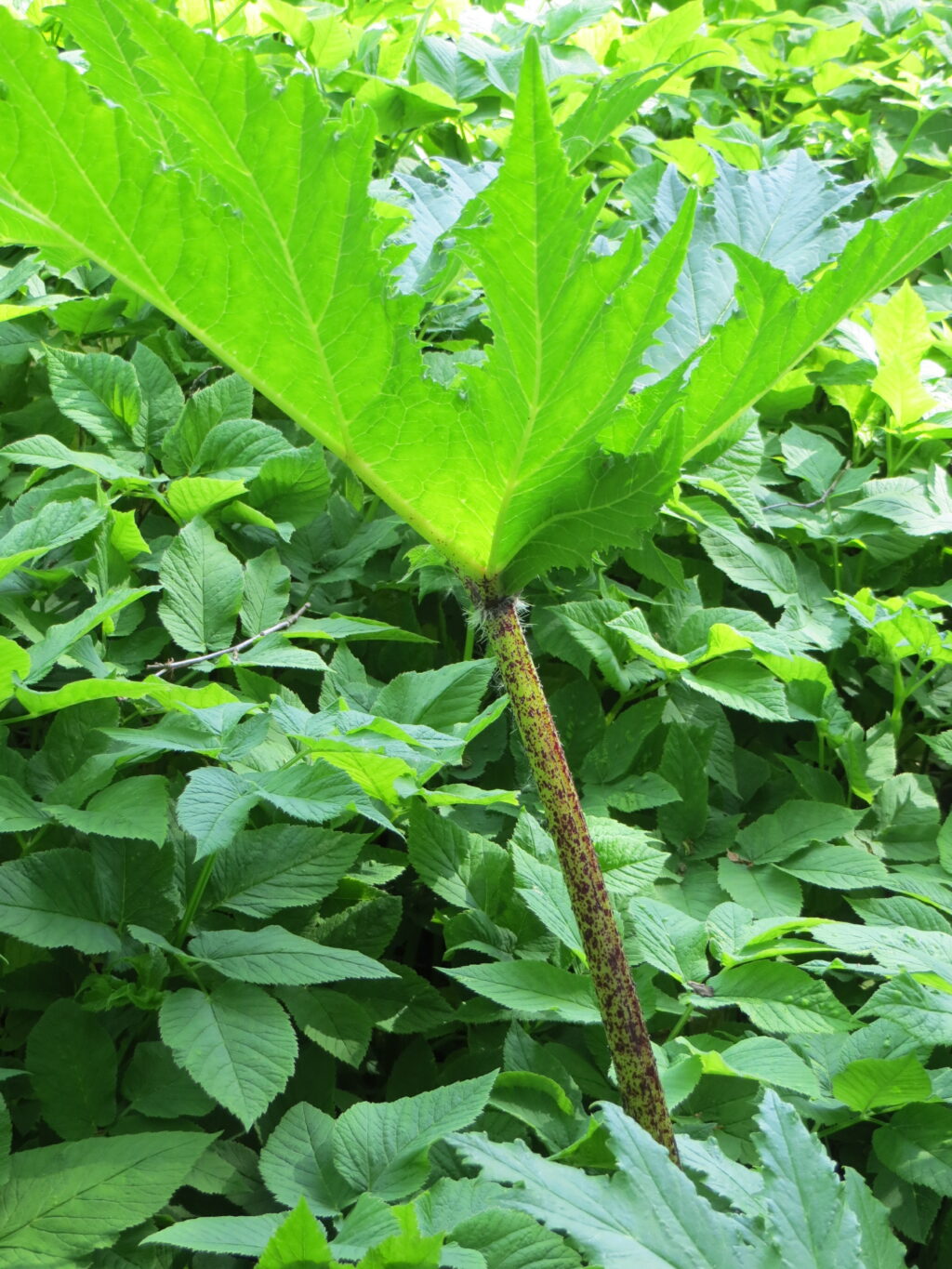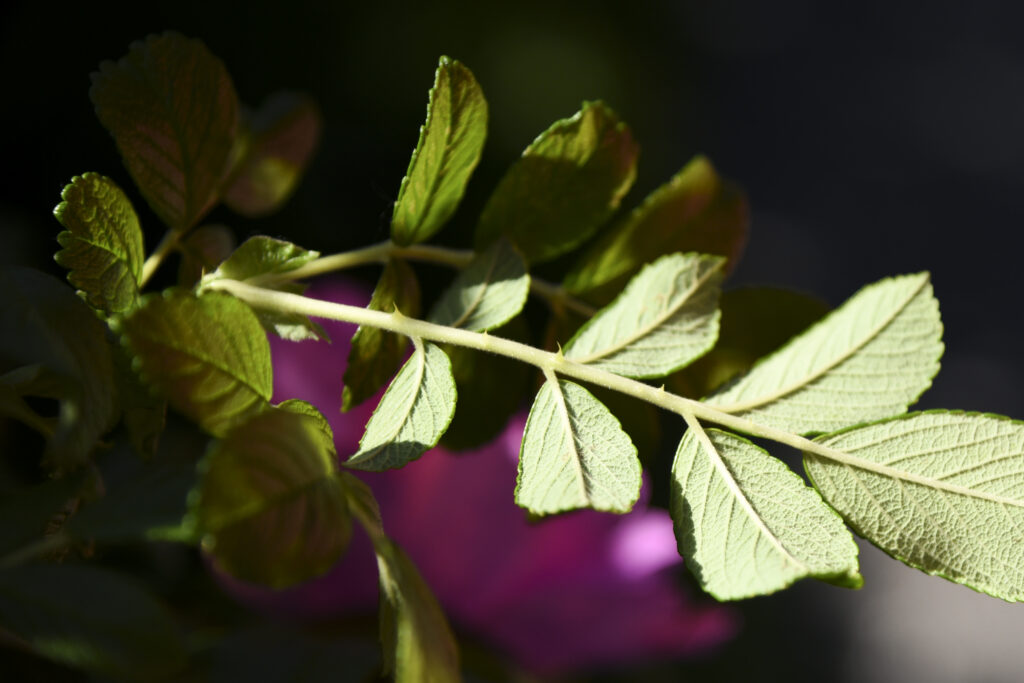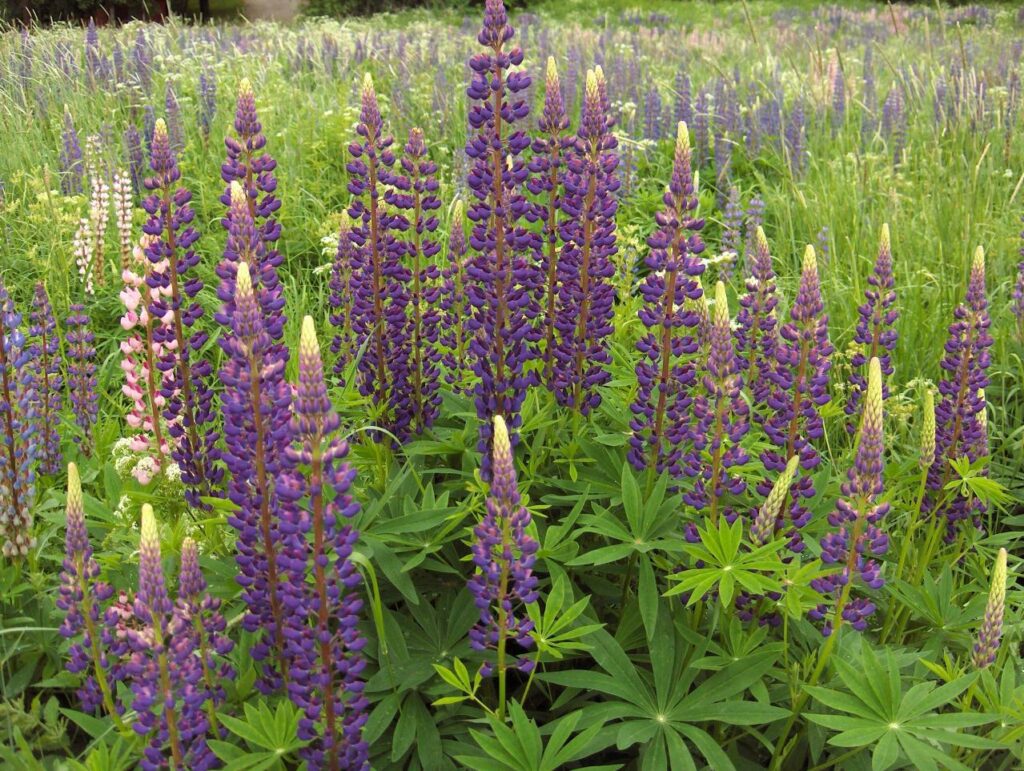Invasive alien species
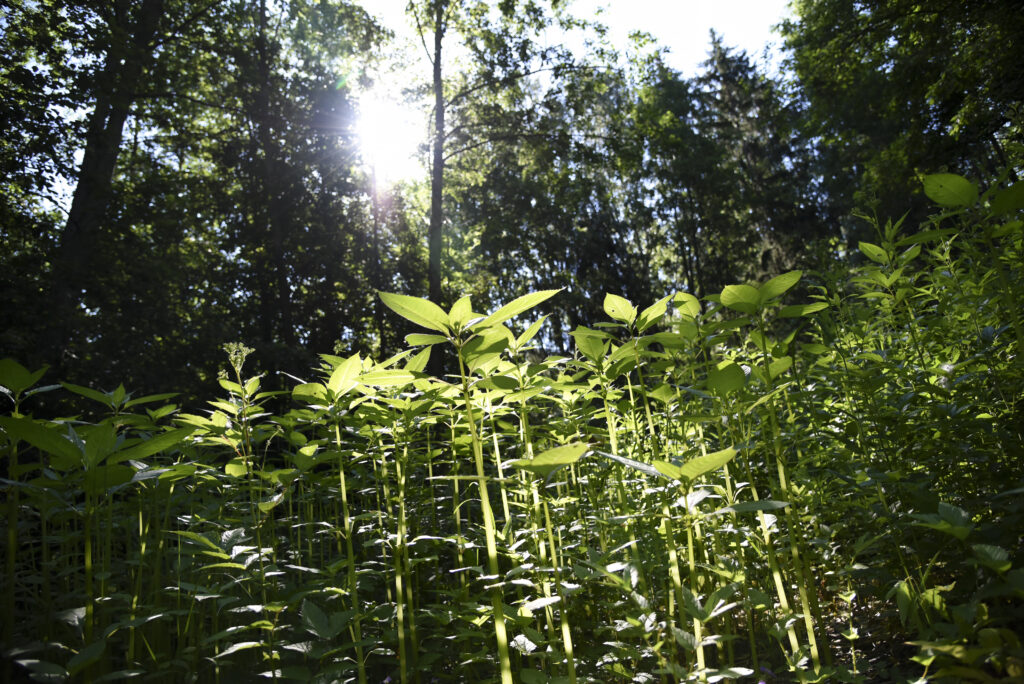
Invasive alien species are organisms that have spread through deliberate or unintentional human activity from their natural ranges to new areas. A small proportion of these species can reproduce in the new natural environment and may displace native species or cause other adverse effects. These species are called invasive alien species.
There are approximately 1,000 invasive alien species in Finland, of which 157 have been estimated to be harmful. In the Kuopio region, the most harmful species are hogweed and Himalayan balsam, which displace native plant species when they spread to forests, meadows and wetlands. In addition to hogweed and Himalayan balsam, invasive alien species in the Kuopio region include red elderberry, garden lupine, rugosa rose, small balsam, Sakhalin knotweed, bellbines and Spanish slugs.
More information about invasive alien species
Information about invasive alien species in Finland.
Read more about invasive alien species on the website of the Ministry of Agriculture and Forestry.
Report your observations
Sightings and observations of invasive alien species should be reported to the laji.fi service of the Finnish Biodiversity Information Facility.
This way, information on the invasive alien species is also transferred to the City of Kuopio.
We also ask the regional environmental protection services to be notified of the any sightings of hogweed.
Dispose of invasive alien species on your plot
Under the Alien Species Act (1709/2015), invasive alien species must not be allowed to spread to the environment. The EU list of alien species and the national list of alien species contain provisions on invasive alien species, which are also subject to a growing ban. In order to grow, it is interpreted that an alien species grows on a property that is in the continuous use and management of its owner or holder. Invasive alien species must be destroyed from the plot and they must not be allowed to spread outside the plot.
This is how the city prevents invasive alien species
The city is working to prevent all hogweed and rugosa rose occurrences in the city area.
With regard to the Himalayan balsam, the city has focused its response efforts on the surroundings of nature reserves and other areas of particular natural value.
-
The Himalayan balsam is an annual herbaceous plant that can grow up to three metres high. The tufted bloom has large flowers, the colour of which can vary from dark red to white. The pod of the Himalayan balsam bursts when ripe, releasing the seeds up to several metres away.
Controlling Himalayan balsam
Himalayan balsam can only grow from from seeds, therefore the destruction of vegetation carried out so that no new seeds can be formed. The easiest way to dispose of small copses of Himalayan balsam plants is to individually dispose of them. Weeding should be done as early as possible before the seeds ripen, ideally right at the beginning of summer when the plants are still small. The procedure should be repeated 1 to 2 times during the summer. Extensive occurrences should be mowed. Mowing is done as close to the ground as possible 2 to 3 times during the summer.
The stems of the uprooted Himalayan balsams are collected in a pile at the edge of the growing site. The stems should be crushed by twisting or stomping so that the plants do not take root again. Controlling Himalayan balsam is easy, and all it takes is a pair of gloves and some work. Removing Himalayan balsam requires the landowner’s permission.
-
Hogweed can be identified by its large, rhubarb-like leaves and a thick and hairy flower stem that grows up to 4–5 metres. The hogweed is related to cow parsley: the blooms are very similar, but the bloom of the hogweed is considerably larger. Hogweed has spread into nature through garden waste and earth moving.
Care should be taken when dealing with hogweed. Its plant liquid causes burn-like damage to the skin when it reacts with sunlight. Sensitive people can get shortness of breath and allergic symptoms from being near hogweed plants.
Controlling hogweed
What is essential in hogweed prevetion is that the plant does not have time to form new seeds. The best time to combat hogweed is in early summer, when plants are still small. Individual plants can be removed by cutting the main root at a depth of 10–20 cm and removing large pieces of the root from the ground as thoroughly as possible. Taprooted seedlings of the first year can be removed by hand.
Large crops can also be mowed a couple of times in the summer. Mowing should be carried out when the vegetation is still low and has not been able to flower. Glyphosate-based pesticides can be used, especially in large-scale occurrences. The plant can also be covered with strong black, light-impermeable plastic, which is placed with the help of weights or by sinking the edge of the plastic into the ground. Covering kills the leaves and destroys the seed bank in the soil. If the hogweed plants are already more than half a metre high, the plants are cut down first. The development of new seeds can also be prevented by cutting the flower before the seeds are formed in June and July.
The blooms of the hogweed must be collected in a plastic bag and burned. Stems and leaves from which flowers and seeds have been removed may be placed in the compost. Due to the risk of skin injury, the disposal of the plants is safer on cloudy days. Appropriate protective equipment must always be used when combating hogweeds. In case of skin contact, wash immediately with soap and water. Plant control is subject to permission from the landowner.
-
Garden lupine is a perennial pea plant growing to a height of 1–1.5 metres. It usually flowers in June–July, but flowering may continue until September. The tall and tufted bloom is blue, purple, pink, white or multi-colored. Colouring can also vary in the same individual plant. The leaves are long-stalked and finger-like, and the root system is upright and strongly branched out. In late summer, a large number of seeds are formed in the hairy seed pods. Garden lupine thrives especially on roadsides and wastelands, where it has spread from home gardens. It has been found to spread more and more to different nature areas, threatening to take over sites from native plants. Garden lupine is poisonous.
Controlling garden lupine
The garden lupine spreads efficiently from the seeds. New seedlings will emerge from the soil seed bank for several years. It is therefore important to cut down or mow the lupines before the flowers are formed in order to prevent the soil seed bank from growing.
Controlling garden lupine must be started in the spring and it must be continued throughout the growing season. The first mowing should take place at the turn of May and June when the flowers are still only budding. Regular mowing 2–4 times during the growing season, from the root of the plant, reduces the vitality of the plant over time.
Cutdown stems and flowers that do not yet contain seeds may be composted or raked to a pile to decompose. Flowers and other parts of the plant containing seeds must be carefully disposed of. For example, they can be placed in in a double waste bag in mixed waste that is be incinerated. If there are only few garden lupines, it is a good idea to dig them up one by one, including the rhizome. The dug up rhizome can be composted after drying. Plant control is subject to permission from the landowner.
-
The rugosa rose is a blooming shrub 1-2 metres high in that flowers from June to September and spreads from seeds or through underground shoots. The branches of the bush are densely spiked and the colour of the large flowers varies from aniline red to pink and white. The leaves are dark green, shiny and wrinkled. The berries that ripen in late summer are orange-red and resemble small turnips.
Controlling rugosa rose
The easiest way to control rugosa rose is when the shrubs are still small. At this time they are often easy to just pull up from the ground. The branches of a larger shrub are first cut down to the root and then the entire rhizome is dug up from the ground. The rhizome, stocks and berries can be disposed of in a well-packed form together with mixed waste. Berry-free branches can be shredded and used as a cover or taken to a waste station as garden waste.
If eradication or digging up rhizomes is not possible, the rugosa rose may also be eradicated by starvation. In this case, the new shoots are removed from the vegetation a few times during the growing season, and the shrubs gradually die. Cut branches can be left at the base of the bush to compost.
-
The Spanish slug is a large shellless snail that is 7–14 cm long when fully grown. Its colour is very varied; ranging from light brown to black. The general feature of their colour is murkiness. Young individuals may have a darker longitudinal streak on their side, while adults usually lack this. The foot seam has black vertical streaks and the part against the ground is monochromatically light. The breathing hole of the Spanish slug is on the right side, at the front of the plate. Its slime is somewhat colourless and is abundantly excreted.
With the help of soil and seedlings, Spanish slugs are spread to planting areas and thereby move to the surrounding environment. They eat plant leaves, flowers and onions and easily cause major damage in gardens and on farms. The species also moves during the day, making them easy to detect. Spanish slugs typically occur in large numbers, so when one is found, there are usually several nearby.
The size of the Spanish slug makes it easy to confuse with the harmless ash-grey slug, the native snail species of our country. The easiest way to distinguish between these snails is that the ash-grey slug’s breathing hole is located farther away from its head than that of the Spanish slug. Unlike the Spanish slug, ash-grey slugs do not appear in large numbers either.
Controlling Spanish slugs
The most effective way of controlling Spanish slugs is during the spring before the individuals who have wintered have time to lay eggs. The best control method is to collect individuals by picking them by hand. For example, you can use grill tongs and pick up the snails in a collection container or plastic bag. Collection can be made more efficient by luring Spanish slugs under the snail covers lying on the ground (e.g. moist or moistened boards or plates) and picking them up from there.
The snails are killed by dropping them in hot water or crushing the end of the snail with sufficient force, e.g. with a stone on a hard surface. Cutting the snail’s head with scissors longitudinally between the horns is also an effective method. The carcasses are disposed of in a plastic bag with mixed waste. Do not put the carcasses in the compost as any remaining individuals may feed on them. Wear protective gloves.
Learn more
Anniina Le Tortorec
Environmental protection planner
